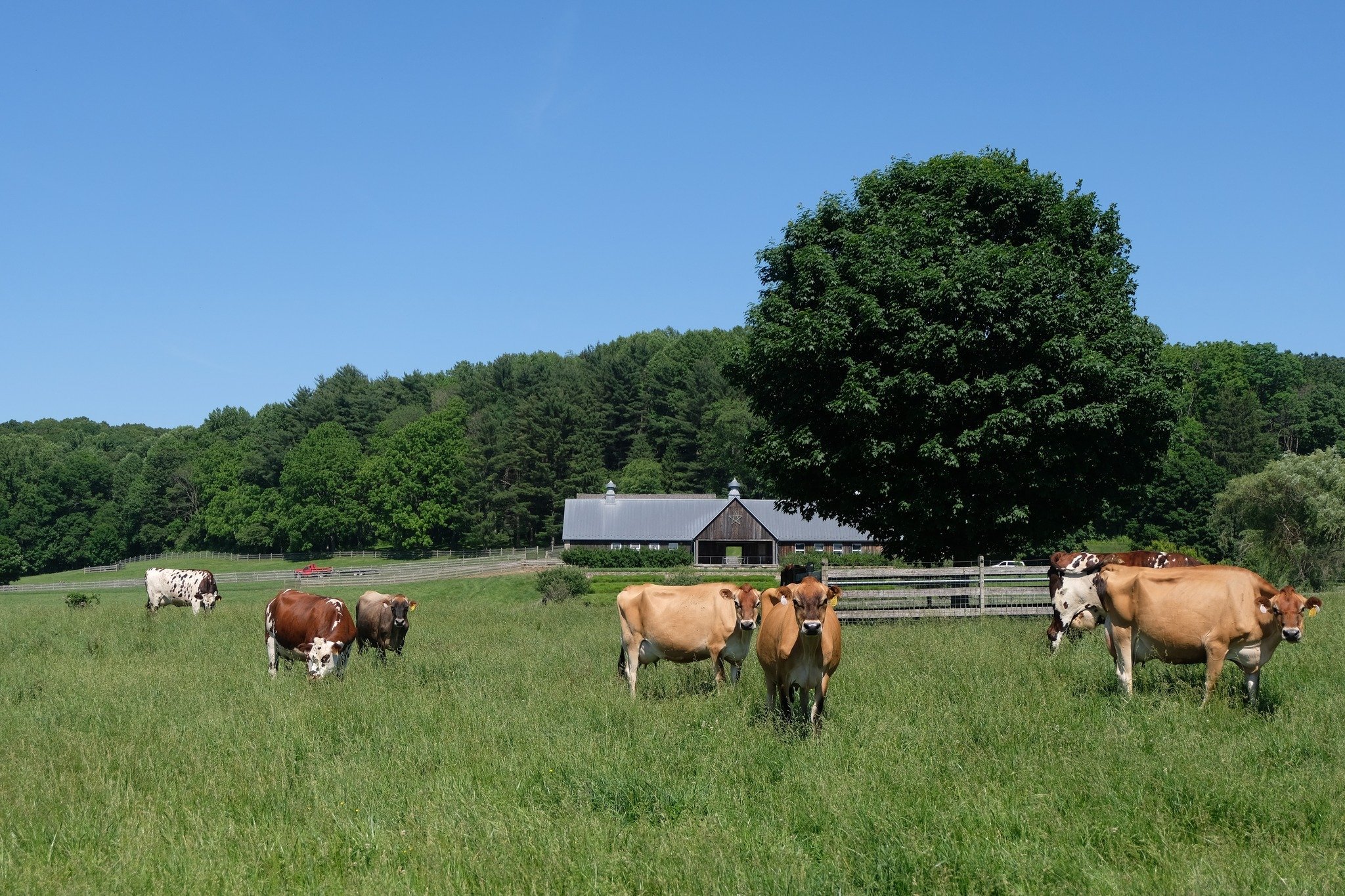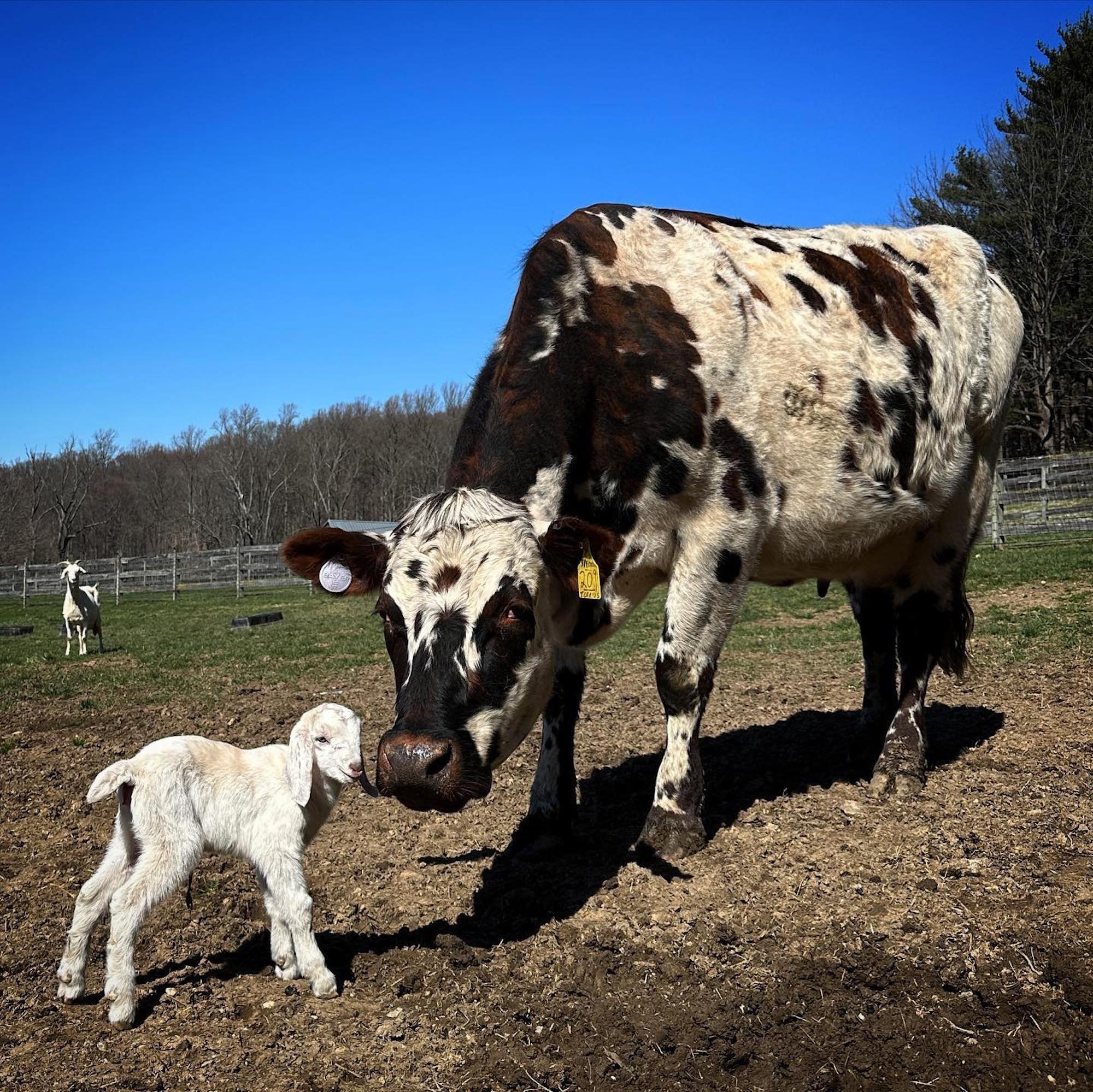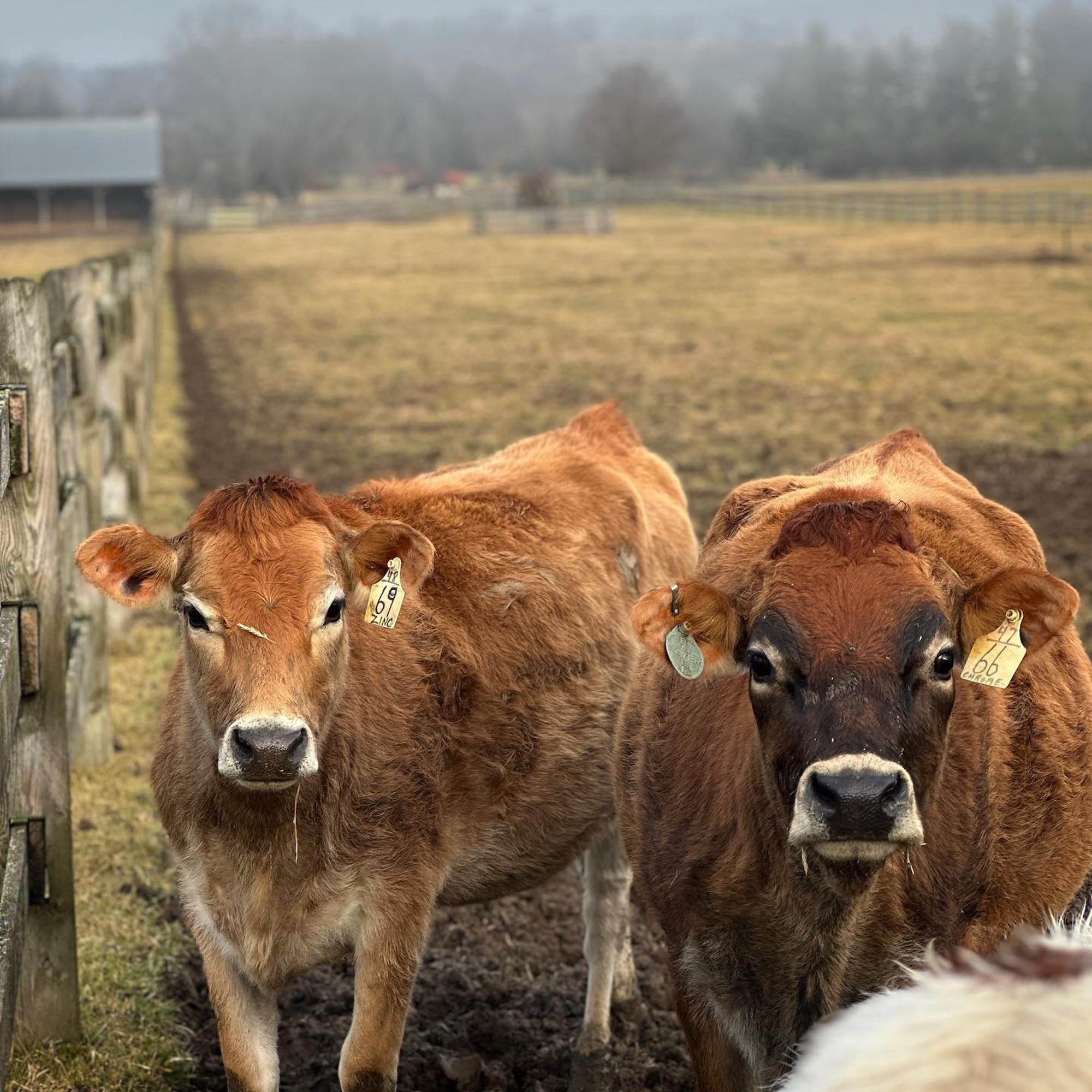Small But Mighty: Get to Know The Farm at Doe Run
Farm at Doe Run
Pennsylvania’s The Farm at Doe Run (website forthcoming) has made a big impact in the American cheese scene in a short time and with modest resources. This year Doe Run’s Alpine-style St. Malachi took top honors in a competition with hundreds of American cheeses. We recently spoke with Doe Run’s Head Affineur, Olivia Haver, to get to know the ins-and-outs of this small but mighty Pennsylvania creamery.
The Farm at Doe Run History and Current Cheesemaking Team
The Farm at Doe Run was purchased in 2008 by Pennsylvania-native Richard Hayne, founder of Urban Outfitters, for the express purpose of establishing a local creamery in the Chester County area. “The vision was to have a local farmstead cheesemaking operation that could be sold to small shops that appreciate delicious, elevated foods, as well as supply jobs to the community,” shares Haver, and the scale of the farm and creamery isn’t much bigger today than it was when it began over 10 years ago. “It’s still a small herd and it’s a small operation,” she says. The Farm at Doe run currently maintains an entirely grass-fed herd of about 20 cows, 50 sheep, and 50 goats, which are solely responsible for all of the cheeses within Doe Run’s lineup.
While Hayne was the founder of the farm, he specifically recruited experienced cheesemakers to run the creamery, and Samuel Kennedy and Matthew Hettlinger have led the operation at Doe Run for almost a decade, introducing cheese favorites such as St. Malachi, Seven Sisters, and Hummingbird, among others. The unique relationship of having a farm owner separate from the cheesemaking team is an interesting, and hopefully sustainable one, as many family-owned farms and creameries struggle with the ability to pass the torch to the next generation. Read about one solution in our piece about Round Table Farm.
Olivia Haver, photo courtesy of The Farm at Doe Run
Haver is now part of a 4-person cheesemaking team at Doe Run, most of whom previously worked together at Vermont’s Jasper Hill, recruited about 2 years ago when the original cheesemaking team at Doe Run decided to move on. As the initial recruit, Haver then reached out to her former Jasper Hill colleagues, who had since relocated to the West Coast. “I asked whether they wanted to move across the country again,” she says, “and they did,” creating a new team for Doe Run that had cooperative experience. Haver is now joined by Head Cheesemaker Miguel Vivanco, Assistant Cheesemaker Ana Mitchell, and Assistant Affineur Hope Vivanco. As a team with only 2 years together at Doe Run, this year’s recent win was a big triumph for them, in continuing the legacy of excellent cheeses from the beloved creamery. “Cheese R&D takes years,” says Haver. “Two years isn’t really that much. Five years’ R&D is when you know you’re super solid on your cheeses.” Their track record, while brief, bodes well: In addition to St. Malachi, Mayfly, Willow, Hickory on the Hill, and 2 yet-unnamed soft cheeses — for now simply known as Batch 37 and Batch 38 — among a few others, also placed in their categories in competition.
St. Malachi
St. Malachi
Named for a local church, the current American cheese it-girl, St. Malachi is a pasteurized, cow’s milk cheese in an Alpine/Gouda hybrid style, with 2 different age expressions: St. Malachi typically aged 8-9 months, and St. Malachi Reserve, aged 14 months on wooden boards in a limestone cave (The younger is the current big winner). “It’s very caramel and toasted sugar forward,” says Haver. “There’s a little bit of savory on the back, especially in our younger St. Malachi. St. Malachi Reserve shifts the focus away from the caramel, and then it goes into more umami touches like soy sauce. I personally love the young version, because you get all the potential flavors at one time and the texture’s still in that fudgy state, but it’s not so young that it’s rubbery. It’s just perfect, and plus you have a natural rind, which is beautiful to look at and adds an extra layer of dimension.”
Shaping the Future of Cheese at Doe Run
While Doe Run favorites are still being maintained by the new cheesemaking team, certain tweaks have been made as they got to know the individual cheeses and the facility. “When you walk into an existing operation you’re reading recipes,” says Haver, “so our focus, especially with St. Malachi, was honing in on what cultures are working for us in this scenario. We made little tweaks here and there, and on my end, I made some changes to the cave environment, but everything they were already doing was awesome,” she says, “obviously, since they were winning awards.”
Expect to see more of Doe Run favorites in the future, but also some new contributions to the lineup. “We have three different milk types, which is so unusual,” says Haver, especially in a single farmstead operation. “And we saw an opportunity to showcase those milk types in more single milk cheeses in order to distill the flavor of our animals living outside all year round. We want to take the flavor of the grass they’re eating — they live outside the whole entire year — and bring that to people through our little cheeses. So the focus, I think, has shifted to also making a lot of soft cheeses that can do that.” Could mixed milk cheeses be next? We can’t wait to find out.





